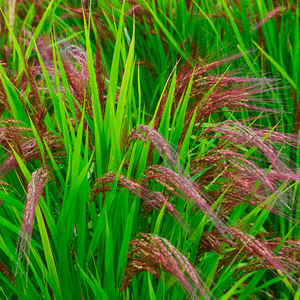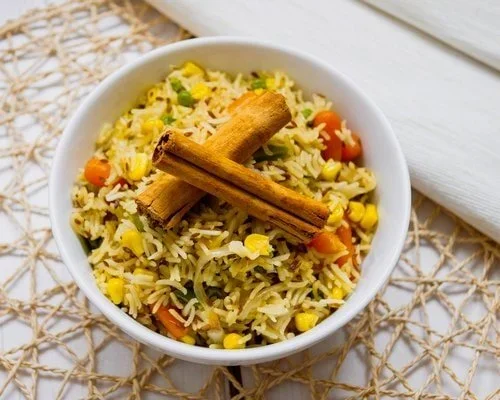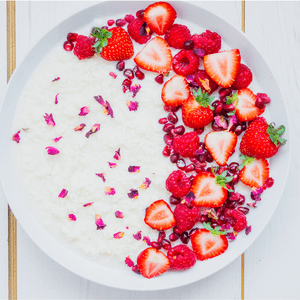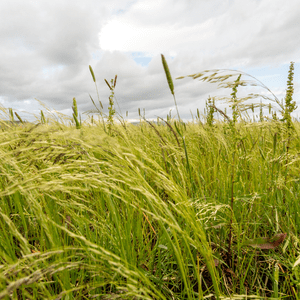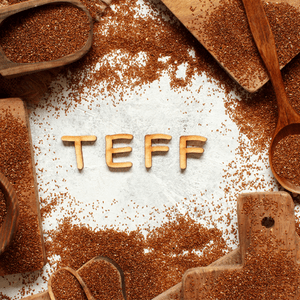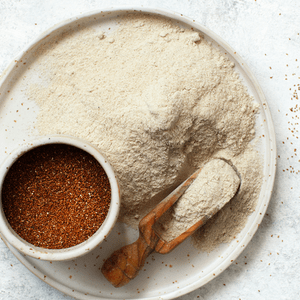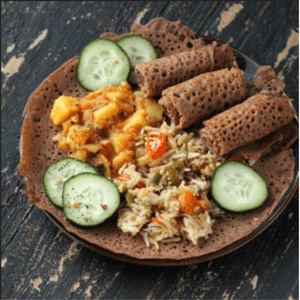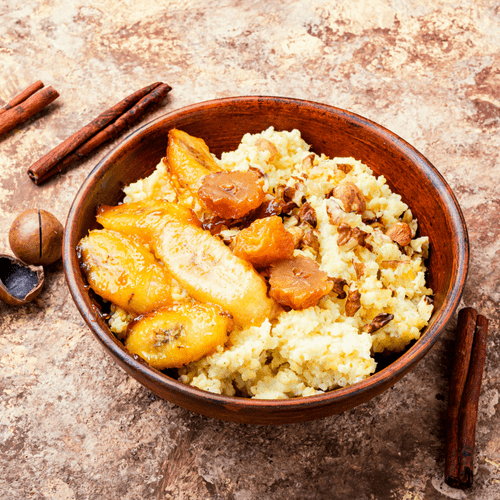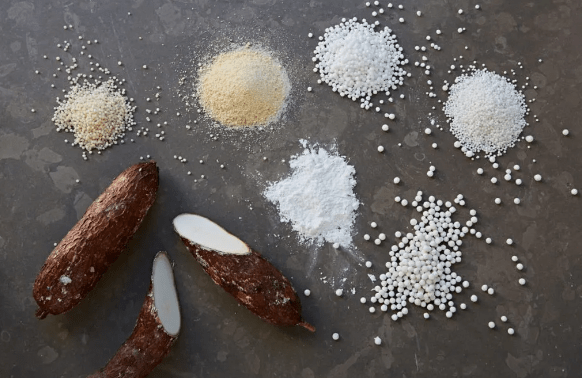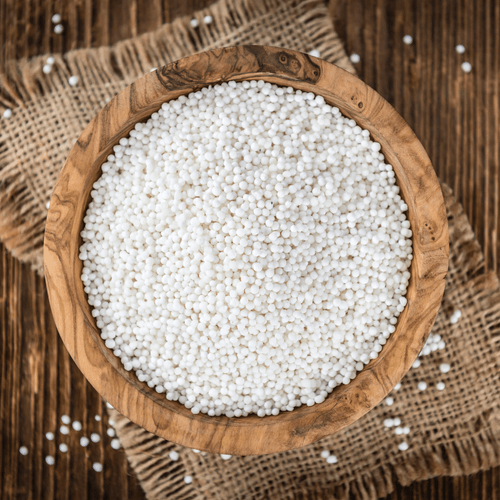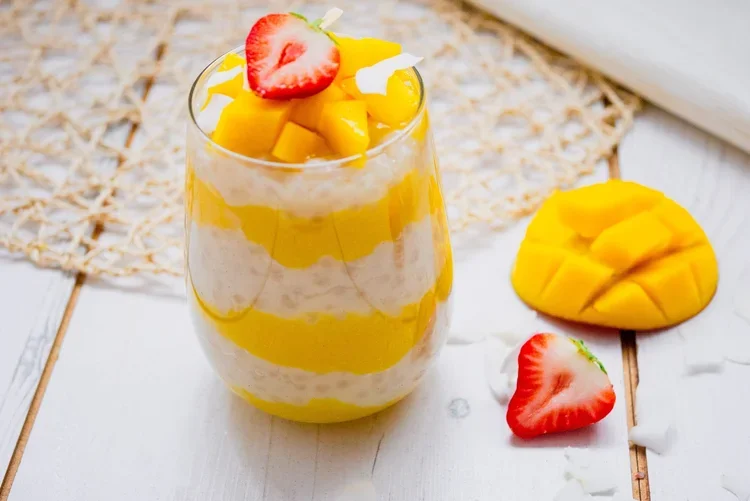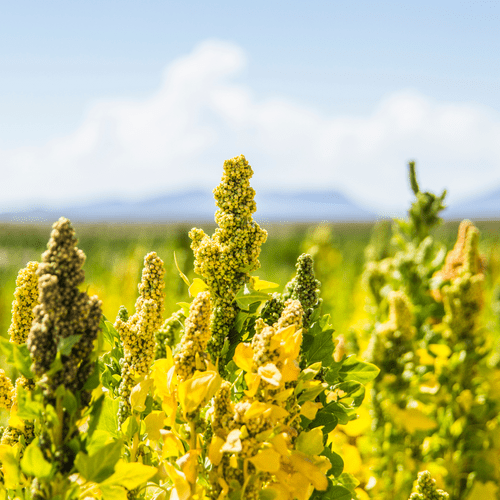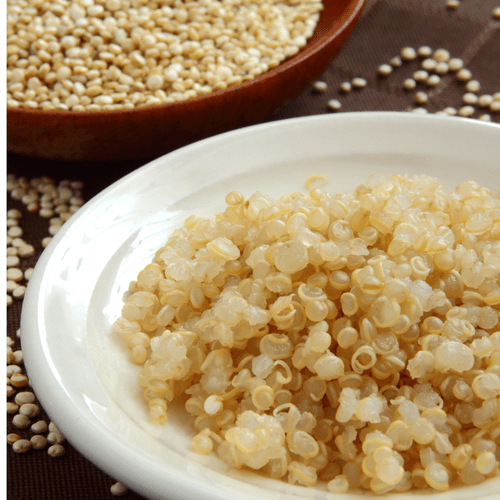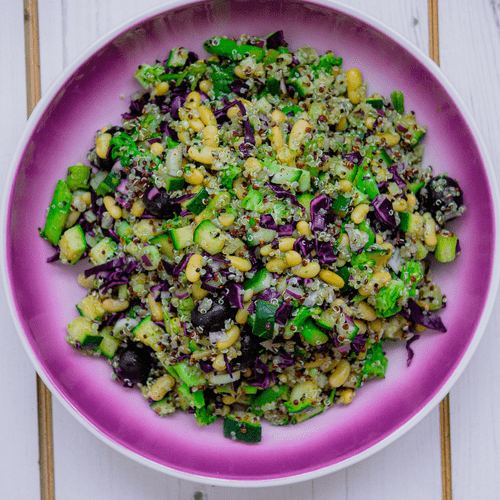A Guide to Gluten Free Grains (Top 10)
Read on to find out the best gluten free grains, which are ancient grains gluten free: how to cook them, and where to buy them with recipes.
There are many reasons that an individual may avoid gluten in their diet, including celiac disease, a wheat allergy, gluten intolerance or sensitivity or other digestive health conditions.
Read on to find out what gluten free grains you can eat, how to cook them, and what they taste like, along with recipes and an overview of my top 10 gluten free grains.
Luckily, following a gluten free diet doesn't mean avoiding all grains. Several grains are naturally gluten free. Here, I cover everything from what each grain type tastes like, how its cooked and where to purchase it:
Amaranth
Buckwheat
Oats
Sorghum
Polenta
Rice:
Teff
Millet
Tapioca
Quinoa
What are gluten-free grains, and why should I eat them?
You might need to eat gluten free grains because of an allergy, an intolerance, or another health reason where gluten is not allowed. I personally follow a gluten free diet to support my gut health, so I have spent a lot of time learning about different gluten free grains and trying new recipes. Cooking with these grains has opened up plenty of tasty meal options for me, and I enjoy discovering ways to use them in creative dishes.
That inspired me to put together this guide about how to cook with gluten free grains, where to find them, and how to add variety to your diet. Many people new to gluten free eating aren't sure which grains are safe or how to prepare them. I want to make things easier by sharing everything I’ve learned. This article covers basic cooking tips and offers practical info about ancient gluten free grains as well, so you can feel confident adding these healthy ingredients to your meals.
Top 10 gluten free grains
Amaranth
Amaranth is one of those ancient grains gluten free that is similar to quinoa. The tiny, light tan-coloured seed is cooked similarly to rice and oats. It’s considered a "pseudocereal" rather than an actual grain since it's technically a seed. Amaranth is from the family amaranthaceae. Like other cereal grains and pseudocereals, amaranth can be prepared in its whole seed form or ground into flour.
Amaranth can be enjoyed in sweet and savoury recipes and is cooked by simmering, similar to cereal gluten free grains like rice and oats. This seed is much smaller than other common grains and is just slightly larger than a poppy seed in size.
Amaranth flour is a popular ingredient with gluten free bakers. Since it's heavy, it should be limited to 1/4 of the total flour in the recipe (by weight). Otherwise, the baked goods will be extremely dense. It combines well with almond flour and works nicely as a thickener in soups and sauces.
What Does It Taste Like?
Amaranth's flavour is nutty, herbal, and slightly peppery. It has a crunchy texture, similar to that of quinoa. Toasted or "popped" amaranth has a more enhanced nutty flavour and is lightly crisp.
How to Cook Amaranth
Amaranth is quick and easy to cook, Add 3 cups of water to a large pan and bring to a boil. Reduce the heat to low, add 1 cup of amaranth, then stir and cover. Simmer for around 20 minutes until the water has been absorbed. Serve and enjoy!
Amaranth Recipes
Amaranth can be used in savoury dishes and sweet breakfast porridge. At the same time, the popped amaranth can be sprinkled over salads, stirred into soups, baked into bread and cookies, or enjoyed as a snack or even a breakfast cereal. The flour can be incorporated into baked goods like bread and pizza dough. Try these recipes:
Amaranth porridge with caramelised bananas
Where can I buy amaranth?
At Holland and Barratt, the grapetree, online, or at health food stores.
Buckwheat
Buckwheat, another ancient grains gluten free option is often thought of as a cereal grain. However, it is actually a fruit seed related to rhubarb and sorrel. Its high protein content offers excellent structure as well as nutrition. It is one of my favourite gluten free grains to cook with, as it's so versatile. It might sound confusing as it has wheat in the name but I assure you that buckwheat is gluten free and safe to eat on a gluten free diet.
Buckwheat belongs to a group of foods commonly called pseudocereals. Which are seeds consumed as cereal gluten free grains but don't grow on grasses. ( like wheat, maize, rice, barley and oats.)
You can buy buckwheat as groats, which are the seeds, or as flour, which is milled; as kasha, which is roasted buckwheat; and buckwheat flakes that can be used to make porridge or as ready-made products like noodles, pasta, etc.
What Does It Taste Like?
Buckwheat has a nutty, earthy flavour that gives off a warm aroma of freshly baked cookies when heated. Its unique flavour pairs very well with dried fruits, nuts, and strong spices, which all inspired our popular chocolate and tea flavours.
Buckwheat has a robust and deep taste versus other common grains but has a similar consistency. What is truly unique is buckwheat's versatility: It’s one of those gluten free grains that is a central component of both savoury and sweet dishes. From bread to pancakes to porridge, buckwheat can be enjoyed in many different ways!
How to Cook Buckwheat Groats
Rinse well through a sieve until the water runs clear. Toast in a dry frying pan for 2-3 mins until nutty and fragrant (this adds a roasted flavour to the buckwheat, but you don't have to toast it). Alternatively, simmer in boiling water for 5-10 mins until the grains are tender but still have a little bite. Drain well. It can then be used to replace rice in most dishes; it’s less starchy and less likely to cause bloating.
Buckwheat Recipes
Buckwheat flour can be used to make breads, waffles, cookies and pancakes, to name a few. Buckwheat groats can be used to make a risotto, or used in salads in the same way quinoa or rice can. Buckwheat flakes can be used to make porridge. Read my article: A guide to buckwheat and its uses in allergy free cookery for more information on buckwheat here.
Take a look at these gluten free recipes using buckwheat:
Buckwheat pancakes with apple & cinnamon
Vanilla and buckwheat granola ( see picture below)
Where can I buy buckwheat?
Buckwheat groats and flour can be found at most supermarkets. Buckwheat flakes and kasha can be found in health food stores or online.
Oats
(Avena sativa) Oats have numerous uses in foods; most commonly, they are rolled or crushed into oatmeal or ground into fine oat flour. Oatmeal is widely eaten as porridge but is also used in various baked goods, such as oatcakes, oatmeal cookies, and oat bread. Oats are also an ingredient in cereals, muesli and granola. Oats are also used to make oat milk.
Oats contain avenin, which is a protein similar to gluten. Research has shown that most people with coeliac disease can tolerate gluten free oats without problems. When oats are whole, they are considered to be one of the ancient grains gluten free.
The issue is that sometimes oats are produced in the same place as wheat, barley and rye and then contaminate these other grains. Only oats labelled gluten free may be eaten by people following a gluten free diet. Uncontaminated oats that test at 20 parts per million (ppm) gluten or less may be labelled 'gluten-free. You can buy rolled oats, steel-cut oats, instant oats, Scottish oats, and oat bran.
Read more about the different types of oats here.
What Does It Taste Like?
Oats are generally quite bland and need to be used in conjunction with different flavours, like fruit or spices like cinnamon. Steel-cut oats are more hearty and nutty. It takes on a new flavour profile if you roast oats as I do in my porridge recipes. My porridge recipes literally taste like flapjacks. Recipes below!
How to Cook Oats
Oats are so versatile that you can make porridge. It usually takes around 15 minutes and turns into a beautiful creamy mixture as the starch is released. You can use oats for flapjacks and grind them into flour for use in baking like cookies, muffins, and tortillas. You can soak them and make them into milk too.
Recipes Using Oats
Oats are so versatile, you can use them to make crumbles, porridge, cookies, pancakes, flapjacks and other baked goods. Although oat flour is similar to all-purpose wheat flour, it cannot be substituted 1:1 in most cases. However, it does have a similar consistency and acts as an amazing alternative for baking. Oat flour can be used by itself or as part of a combination of other gluten-free flours, such as almond or coconut.
Spiced pecan and maple granola
Fig, blueberry and coconut porridge ( see picture below)
Blueberry, oat and lemon crumble bars
Where can I Buy Gluten Free Oats?
Some supermarkets will sell GF oats, and most health food stores will also sell GF oats.
Sorghum
(Sorghum bicolor), also called great millet, Indian millet, milo, durra, or shallu, cereal grain plant of the grass family (Poaceae) and its edible starchy seeds. Another ancient grains gluten free to enjoy!
Sorghum is a tasty ancient gluten free grain shaped like a little ball coated with an edible hull. Sorghum can be eaten and prepared like any other grain cereal. It can be popped like popcorn and eaten as a healthy snack, topping on a dessert, salad, or granola bowl. Sorghum comes in lots of different varieties.
Whole grain: Whole grain sorghum comes with all of the parts of the grain intact.
Pearled grain: Pearled sorghum comes with the bran, and part of the germ is removed, so it is mainly just the kernel.
Flaked grain: Finally, flaked sorghum is just that; flaked! It is a crunchier option and looks more like cereal than a round grain.
Flour: sorghum flour can be used to bake cakes, cookies and other baked goods
There's also something called sorghum syrup, or sorghum molasses. It's created by milling the stalks of the plant to press out the liquid, which is boiled to create viscosity; this also gives it a brown colour similar to maple syrup.
What Does Sorghum Taste Like?
The sorghum flavour is mild, with a trace of nutty sweetness and an earthy undertone. There's also a nuance of fresh-churned earth that gives a bit of richness to the grain. Its texture is firm like a wheat berry, and cooked sorghum spheres can "pop" in the mouth when eating.
How to Cook With Sorghum?
You can soak and cook it to make a porridge, grain side dish, or stuffing for peppers. It's also good stirred into a soup or stew, thickening the broth and adding even more heft to this cold-weather dish. Overall, cooked sorghum pairs well with mushrooms, dark green vegetables, eggplant, tomatoes, red meat, roasted chicken, roasted carrots, and an array of herbs.
Sorghum Recipes
This ingredient is an excellent addition to any hearty meal, especially when it needs to be gluten free. Try it as a side dish, in a casserole, soup or stew. It can so be made into flour for baking purposes.
Where Can I Buy Sorghum?
I've never seen sorghum in supermarkets here in the UK. I always buy it online or at my local health food store. If you can't find it at your health store, then always ask to see if they can order it for you.
Polenta
An Italian store cupboard staple, polenta has its roots in the peasant cuisine of northern Italy. Polenta is a northern Italian dish made of coarsely ground corn. Freshly cooked, polenta is soft and creamy, like porridge and makes a terrific bed for sauces. It's an excellent gluten free substitute for just about any dish that calls for pasta. When polenta cools, it firms enough to be sliced and fried or layered like pasta sheets.
It's made by grinding corn into flour or meal. It has a rich yellow, yolk-like colour and has a slightly sweet flavour.
Polenta can be cooked creamy and thick or allowed to set and then sliced. Serve it instead of pasta, rice or potatoes. Use in place of breadcrumbs to coat chicken or fish when frying.
Uncooked polenta makes a delicious addition or gluten free alternative to flour in cakes, biscuits and pastries. Cakes made with polenta tend to be moist and dense with a pleasantly grainy texture.
What Is the Difference Between Polenta and Semolina?
As polenta is made from corn, it's gluten-free. On the other hand, Semolina is coarsely ground, high-gluten durum wheat used to make pasta, cakes, and bread.
What does Polenta Taste Like?
The flavour profile of polenta is incredibly satisfying, offering a sweet corn taste with a texture and consistency similar to that of porridge.
How do I Cook Polenta?
Bring a pot of lightly salted water to a boil. Once the water is at a steady boil, add your polenta grains and cook for around 45 minutes. Make sure you stir it consistently as it cooks so that the grain will cook evenly and puff up to the desired texture. To add more flavour, swap out the water for chicken stock and add thyme, a bay leaf, and some chilli flakes for extra spice.
Polenta Recipes
Polenta with harissa chickpeas ( see picture below)
Where Can I Buy Polenta?
From most supermarkets and health food stores.
Rice
(Oryza sativa), is an edible, starchy cereal grain and the grass plant (family Poaceae) produced by it. There are many colours and sizes of rice on the market today, including black rice, brown rice, yellow rice, and white rice. It is such a versatile gluten-free grain to use and many varieties. Wild rice is considered an ancient grains gluten free option.
Long–Grain Rice: is the most popular and longest-grain size. It is great to serve alongside curries, chillies, or stews.
Medium-Grain Rice: When cooked, medium–grain rice is softer than long–grain rice but not as soft as short-grain rice. It is great for use in risotto dishes.
Short Grain Rice: Typically used in rice pudding dishes due to its sticky and moist attributes when cooked.
Did you know that there are over 40 thousand rice varieties? Some common varieties are: White Jasmine rice, basmati rice, black rice, red rice, wild rice, sticky rice, and sushi rice.
How do I Cook Rice?
Rice is cooked by boiling. Use 1 cup rice to 2 cups water. The time depends on what type of rice you are using. White basmati rice can take 15 minutes to cook, whereas black or brown rice can take up to 45 minutes. Always read the instructions on the packet if you are unsure.
What Does Rice taste like?
Because of the different varieties, they do taste different. For example, aromatic kinds of rice like jasmine and basmati have a beautiful aroma and are fluffy and great to use in eastern-type dishes. Sticky rice like sushi or jasmine has a glutinous texture and fragrant taste.
Red rice is not sticky, fluffy or starchy and tastes nutty, as does black rice. It's really worth experimenting with the different varieties, rice is relatively cheap, too, so you won’t be breaking the budget.
Where Can I Buy Rice?
At all supermarkets, the specialist types of rice can be found at either health food stores or online.
Rice Recipes:
Other products in which rice is used are breakfast cereals, flour, noodles, and alcoholic beverages such as Japanese sake. Its versatility makes rice the perfect grain to eat on a gluten free diet.
Try my pilaf rice recipe here.
Coconut & berries rice pudding recipe here.
Recipe using black rice here.
Teff
Teff (Eragrostis tef), sometimes spelt tef, is cereal grass (family Poaceae) grown for its tiny nutritious seeds. Teff grain and Teff flour are excellent alternatives to wheat, barley and rye for those on a gluten free diet. Enjoy it as a ancient grains gluten free choice.
Teff is rich tasting and very versatile. Using other 100% natural and organic ingredients to complement its great flavour.
Teff is native to Ethiopia and Eritrea, where it is a staple food crop for millions of people. Teff seeds are among the smallest cereal grains, usually measuring less than 1 mm (0.04 inch) in diameter. Teff flour is used extensively in Ethiopia to make injera, a soft flatbread prepared from slightly fermented batter, and the grains are also used in stews and porridges.
What Does Teff taste like?
The grains have a mild, nutty flavour. Ivory and brown teff are sweet-tasting grains unlike any other. Teff is an interesting new grain for you to experiment with on your gluten free journey.
Teff are sweet-tasting grains unlike any other. Brown teff has a subtle hazelnut, almost chocolate-like flavour and a moist texture similar to millet (but more exotic). Ivory teff has a milder flavour than brown.
How to cook Teff
Teff can be cooked alone or in combination with other grains and vegetables its a great gluten free grain to experiment with and its cheap. Simply boil 1 cup teff with 3 cups water or stock. Season with one or more of the following spices for a tasty dish: cinnamon, ginger, garlic, cardamom, chillies, basil and cilantro. Teff is quick cooking, too. Ready in 20 minutes,
Where can I buy Teff?
Mainly online or at your local health food store.
Teff recipes
Teff is ideal for fast meals. For pastries, ivory and brown teff flour make superb pancakes, pie crusts, and cookies.
Take a look here for teff recipes.
Millet
Millet is a gluten-free cereal grain that belongs to the Poaceae family, commonly known as the grass family. This mildly sweet ingredient is also a ancient grains gluten free option.
While it may look like a seed, millet's nutritional profile resembles sorghum and other cereals. It's considered an ancient gluten free grain used for human consumption and livestock and bird feed.
It's a primary ingredient in flatbreads, beer, other fermented beverages, and porridges. Many commercially produced gluten-free bread in the United States use millet flour, either solely or in conjunction with flour milled from other gluten-free grains.
Though technically a seed, millet functions like whole grain, and you can cook with it like you would other whole grains, such as rice or quinoa. They look like tiny corn kernels and cost about a quarter of what you would pay for quinoa, making them among the more economical grains available. Like many whole grains, millet can be purchased as flour or flakes.
What Does It Taste Like?
Millet falls on the sweeter end of the whole grain scale; some people liken the flavour to corn. It also readily takes on the flavour characteristics of the ingredients in a sauce or a dressing. But the fluffy texture of cooked millet, similar to mashed potatoes or steamed rice, distinguishes it from other whole grains, such as chewy barley, buckwheat, or farro.
Like those whole grains, millet has a slightly nutty flavour, enhanced by toasting. I think it tastes quite similar to cous cous and love using it instead of rice in some dishes.
How to Cook Millet
Use 2 cups of water for each cup of millet; for a softer, creamier result, increase the water to 3 cups. Bring it to a boil, add salt and the millet, cover the pot, and turn the heat down. Keep a close eye on the pot as it simmers, checking the texture at 15 minutes if you plan to use it as a grain side dish such as pilaf. If it's done, you can drain off any water the grains didn't absorb or continue cooking for up to an additional five minutes. For a softer and creamier millet, such as breakfast porridge, simmer for an additional 10 minutes, stirring periodically.
Recipes using Millet:
Like quinoa and other whole grains, millet lends itself well to breakfast porridge dishes, a replacement for rice alongside vegetable stir-fries, and a savoury pilaf. It's also a versatile bulking ingredient in soups, casseroles, and vegetarian patties, making millet a perfect gluten-free grain to add to your cooking repertoire.
Take a look at some millet recipes here.
Try my millet salad recipe here, (seen in the picture below)
Where Can I Buy Millet?
Millet flour should be available with other speciality flours. Millet flakes may be hard to find in a standard grocery store, but you can purchase them online. You may also be able to find ready-to-eat puffed millet cereal, similar to puffed rice cereal.
I bought millet grain from the Grapetree which is a high street health food shop, that’s really cheap. Or you can buy at your local health food shop or online.
Tapioca
Tapioca is a starch from the plant cassava. Tapioca pearls and powders are most often white or off-white, but the pearls are frequently used in desserts. Tapioca flour is similar to cornflour, while the spherical pearls look like giant couscous.
What Does It Taste Like?
The smell and taste of cassava flour are often described as sour, fermented or musty. For those with sensitive tummies, tapioca is for you! This ingredient is gentle on the stomach, and many find it easier to digest than regular flours created using grains or nuts making tapioca a really great gluten free grain alternative. Tapioca flour and tapioca starch also serve as an alternative to white flour for thickening purposes and are used to make soups, sauces and pie fillings.
How to Cook Tapioca
If you are making a tapioca pudding, heat coconut or plant-based milk, add the tapioca pearls, and then simmer for 25 minutes. It will turn really creamy. It's opaque before cooking but turns translucent upon hydration. Tapioca pearls come in large and small sizes.
In addition, tapioca adds body to soups, sauces, and gravies. As a binder and ingredient and stabiliser, tapioca can be added to ground meat products, such as burger patties and chicken nuggets.
It traps moisture in a gel, so it's often added to baked goods to prevent the pastry from becoming soggy during storage. Tapioca is a common ingredient in gluten free products because it helps lighten the texture and maintain moisture without gluten.
What Does Tapioca Taste Like?
Tapioca has a neutral flavour and strong gelling power, making it effective as a thickening agent in both sweet and savoury foods. When making tapioca pudding, you can add sweetener, cinnamon, coconut or fruit to the pudding.
If you are using the flour for baking, I would recommend finding recipes suited to using the flour as you cannot simply swap a cup of wheat flour for tapioca flour as they both have different textures and properties
Recipes using Tapioca
It is used in puddings, noodles, bread, and other food products. Tapioca can take multiple forms: flour, flakes, seeds or pearls.
Take a look at recipes using tapioca pearls here.
Take a look at Tapioca flour recipes here.
Here is my tapioca pudding recipe here, ( seen in the picture below)
Where Can I Buy Tapioca?
You can buy tapioca pearls at either a health food shop or online. I bought my tapioca from my local Indian shop and it was really cheap. Tapioca flour can be bought at some supermarkets, health food shops or online.
Quinoa
Quinoa (pronounced KEEN-wah) is the seed of the Chenopodium quinoa plant. Quinoa is a flowering plant in the amaranth family. This grain is techically a seed and is considered an ancient grains gluten free ingredient.
Botanically speaking, it's not a grain. This seed from a weed-like plant called goosefoot, closely related to beets and spinach. However, it's often called a "pseudo-grain" because it's similar in nutrients and eaten the same way as cereal grains.
There are over 3,000 varieties of quinoa. However, the most widely grown types are red, black and white. There is also a tricolour variety, a mixture of all three. You can also buy quinoa flour which lends itself well to baked goods. Quinoa can be prepared like brown rice or barley, and you can also purchase quinoa flour and quinoa flakes in any form.
What Does Quinoa Taste Like?
They are tiny, bead-shaped seeds (although more similarly treated like grains) with a little tail that unfurls when cooked. It has a slightly nutty flavour and firm texture.
Unlike wheat or rice, quinoa is a complete protein, containing all eight of the essential amino acids. It is perfect for vegans; if you haven't tried quinoa yet, this is a grain you must add to your gluten free pantry. I use it all the time, and it's a healthy gluten free grain to eat and gentle on your tummy if you have digestive issues.
How do I Cook Quinoa?
To prepare quinoa, rinse it first, cover it with seasoned water, stock, or vegetable broth, bring it to a boil, then put a tight-fitting lid on the pot, and turn the heat down to low. Simmer it until it softens, about 15 minutes; look for the tiny spirals of the germ to appear, a sign that it's done.
Drain it with a fine mesh sieve, return it to the warm pot to rest for about 10 minutes with the lid on, and then fluff it with a fork to separate the grains.
Recipes using Quinoa:
Try my quinoa salad recipe here.
Lots more quinoa recipes here.
Where Can I Buy Quinoa?
From all supermarkets in the UK, health food shops and online.
What grains should I exclude from a gluten free diet?
There are types of grains and grain products that should not be included in a "gluten-free" diet because they contain the form of gluten that is not safe for people with celiac and most gluten intolerances. Or have a high chance of cross-contamination in their production, The list of gluten containing grains are:
Barley
Barley malt or extract
Bran - Wheat bran
Bulgur Wheat
Couscous
Durum
Farina
Faro
Kamut
Malt matzo flour or meal
Orzo,
Panko,
Rye
Seitan
Semolina
Spelt
Triticale
Udon
Wheat
Wheat germ or wheat starch.
It is always essential to read product labels. Some products, such as soy sauce and other seasonings and sauces, contain wheat. If you need more information on how to eat a gluten free diet take a look here. And if your looking for more inspiring recipes,click on the button below!
Further reading and references
https://www.mashed.com/442720/what-is-polenta-and-what-does-it-taste-like/?utm_campaign=clip
https://www.thespruceeats.com/what-is-amaranth-5077691
https://kamsokhi.com/articles/buckwheat-and-its-uses-in-allergy-free-cookery
https://celiac.org/gluten-free-living/what-is-gluten/sources-of-gluten/
You might also like:
Looking for anything?
Browse all Articles
Latest Articles
Latest Recipes
Follow along 0n Instagram
Shop Cookery Books & Resources




















